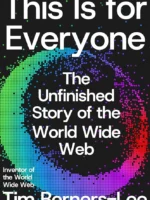How the Web Was Born: The Story of the World Wide Web Review
How the Web Was Born by James Gillies and Robert Cailliau is a primary-source history of the web’s early years at CERN: from competing hypertext ideas to a working, open standard adopted worldwide. It shows how modest tools, clear protocols, and the right institutional choices beat grand but closed systems.
Overview
The narrative traces precursors—hypertext research, TCP/IP, SGML—then follows Tim Berners-Lee’s proposals, prototypes, and iterations with Cailliau and colleagues. It covers the first server and browser, early evangelism, and the decision to release the web royalty-free.
Summary
Key moments: the 1989 and 1990 memos that framed the problem as linked information at CERN; crafting URLs, HTTP, and HTML as simple, extensible building blocks; building a community through demos, mailing lists, and open code; and the 1993 public domain decision that unlocked global adoption. The book highlights trade-offs: simplicity over features, openness over control.
Authors
Gillies, a science writer, and Cailliau, a CERN engineer and early web champion, combine documentation with insider detail. The tone is factual and restrained.
Key Themes
Openness as a force multiplier; simple protocols that compose; standards and communities as the real platform; institutional decisions that shape ecosystems for decades.
Strengths and Weaknesses
Strengths: authoritative sources, technical clarity at a readable level, and careful treatment of competing projects. Weaknesses: ends before later web eras and offers limited analysis of commercial dynamics. Pair with later histories for the browser and platform wars.
Target Audience
Engineers, product historians, web designers, and students of technology policy who want a grounded origin story with technical context.
Favorite Ideas
Small, universal identifiers and protocols; “rough consensus and running code” culture; licensing choices as architecture.
Takeaways
Big ecosystems start with simple, open pieces and patient community building. Keep protocols clear, release IP constraints, and let adoption drive refinement.






